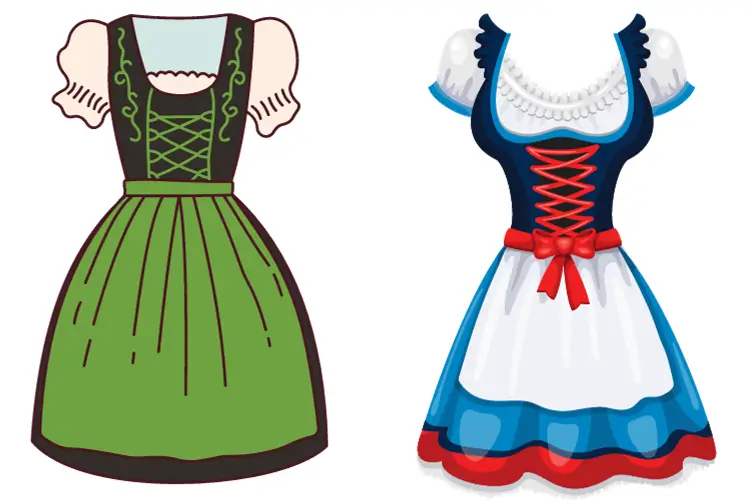Garments Quality Check Points and Their Quality Control
Garments QC/QA Check Points: There are four sections of garments quality controlling process, these can generate defects in manufacturing, sections are cutting, sewing, washing, and finishing, and must be there some criteria check QC team for garments product quality. This article clearly showing quality controlling criteria of every quality checkpoints of a garments factory and simply described garments quality requirements. Hopefully, after reading this you will have a good idea of Garments Quality Check Points and Their Quality Control.
Section wise Garments Quality Check Points
- Cutting quality Check Points
- Sewing Quality Check Points
- Washing Quality Check Points
- Finishing Quality Check Points
Garments Quality Check Points and their Checking Criteria
Here given section wise quality checkpoint description for your better understanding as mentioned every work of garments quality control department.
Cutting Process Quality Check Point
- Fabric upside down: Make sure the fabric is not upside down.
- Fabric Skewing: A maximum skewing of 2 cm for the chest of 60 cm is acceptable, but not more. This defect can be solved by re-setting of the fabric at the fabric mill.
- Relaxation: Before cutting, knitted, elasticized woven fabrics should be suitably relaxed for around 12~24 hours or more, depending on the type of fabric. Relaxation is mandatory for stretch fabrics.
- The height of cutting pile: The higher the pile on the cutting table, the more chance the cut pieces are unequal in size. This can lead to size specification & fitting problems. Make sure the height is suitable for the type of fabric (usually 2~3 inches and never more than 5 inches).
- Numbering and bundling: Make sure the different parts are properly numbered to avoid shading and that this numbering can be easily removed after sewing is complete.
- Storing: Make sure the different parts are properly stored, for example, rolled, and not folded.
Sewing Process Quality Check Point
- Critical operations: Check all critical operations repeatedly (like the sewing of the neck- seam, armhole, cuff, placket, etc.), so the operator gets the clear input of what is required and how to make it correctly before large quantities of garments are finished.
- Attaching label should be correct as per the size of 100% garments
- Checking bonding strength of interlining in the fusing process.
- Seam allowance: check operators repeatedly on this point to make sure they use the correct seam allowance.
- Numbering: Make sure the sewing operatives keep parts with the same number together to avoid shading.
- Confirm Garments styling construction and measurement are correct as per the approved sample.
Washing Process Quality Check Point
- Washing method: normal wash, stone wash, sand wash, or enzyme wash.
- Bleaching method: stone bleach, garment bleach
- Any special process. E.g. over-dye after the washing process
- The color tone of the blue yarn
- The whiteness of the white yarn
- Resultant color tone: bluer or yellowish
- Rubbing effect: contrast on the blue yarn and white yarn
- Evenness on the blue and white parts
- Hand-feel
- Record the identification of the sealed sample, quality standards on the final inspection report to ensure QC check the bulk according to the correct standards.
- Tick and sign all quality standards as an indication of proper QC checking.
- QC should not release the shipment if they find the following major faults.
- Color out of the approved shade band
- Fabric flaws and washing marks in excess of 1″ on the garment zone above the knee
- Fabric flaws and washing marks in excess of 3″ on any part of the garment
Finishing Process Quality Check Point
- Button attaching and button
- Pressing
- Full Garments quality check
- Packing and carton
Button Attaching and Button
- Snap button too loose / too strong
- Snap button not closing properly / broken
- Missing poly washer for snap buttons
- Button coming off
- Fabric not strong enough to hold the button
- Mark from molding
- Paint damaged
- Rust
- Text on button not straight
- Wrong position / not in line with counterpart / incorrect spacing
- Button shank missing when required
- Buttonhole too big or too small
- Buttonhole not clean / badly stitched/ losing shape / stitched with wrong thread quality
- Spare button missing or put in the wrong position
Check Pressing
- Shiny marks
- Not pressed or improperly pressed
- Should avoid the press and fold the pigment-dyed fabrics before garment washing entirely. It is because it will leave a clearly visible mark on the garment after washing. After sewing, put the garments on a hanger until washing starts.
Full Garments Quality Check
- Checking full garments workmanship defects
- Measure 100% garments to assure fittings
- Heat seal peeling off
- Confirmation quality check of final garments product
Packing and Carton Quality Check
- Correct ticketing and placement
- Packing accuracy of quantity, assortment, and folding
- Correct carton selection as per customer requirement
- Packaging, sealing, binding and barcode checking
Final Inspection Quality Check Points
After completing carton, Garments buyer QC does a Final quality inspection, evaluate final product quality. Final Audit or inspection is the most important factor for a garment factory. Final Audit is the final judgment of product quality from the buyer, the inspection calibrates overall garments factory quality controlling. Without passing final inspection, garments cannot be shipped. A final inspection report is the quality certificate from garments buyer what gives a certificate of a factory about their finished product quality that allows or rejects to ship garments. There are specific quality checking points of a finished garments final audit, here I have given these in below.
Quality Inspection Criteria’s are of Final Audit
- Workmanship
- Appearance
- Measurement/Fittings
- Materials
- Accessories
- Finishing/Packing
Workmanship
- Fusing
- Open seam
- Broken stitch
- Miss/Skip Stitch
- Mending
- Seam grinning
- SPI incorrect
- Needle damage/cut/holes
- Puckering/Twisting
- Stripes/Plaid Mismatching
- Stepping or Hi-low
- Misaligned/Insecure Buttons
- Crooked stitching
- Raw edge
- Looseness/Knots
- Buttonhole
- Incorrect tension
- Main Label open/slanted
- Contrast thread visible
- Loop slanted
Appearance
- Loose/uncut thread
- Dirt mark
- Oil stain
- Garment damp
- Crushed
- Pressing
- Shinning
- Wrinkle
Measurement/Fittings
- Out of tolerance any measurement points
Materials
- Body fabric way
- Contrast fabric
- Print/Dyeing Fault
- Color Shading
- Bald Patches
- Holes or Cuts
- Yarn Runs
- Slubs
- Color fly/ Foreign yarn
Accessories
- Thread/ Yarn
- Main Label
- Care Label
- Zipper
- Tapping/Capping
- Screenprint/Embroidery
- Buttons/Snaps/Rivets
- Velcro
- Elastic
Finishing/Packing
- Assortment
- Carton Marks
- Polybag printing
- Hangtag
- Price ticket
- Barcode
- Carton Barcode
Related articles you may also love to read:
- Types of Garments defects
- Garments defects picture
- Garments defects List
- Washing defects list
- Garments quality control procedure
- Garments Quality SOP
- Garments quality manual
- Minimize sewing defects
- Cutting quality control procedure





Good article.Thanks
nice article with good content which is worth reading it. Thanks for info.
VERY GOOD CHECK POINTS
nice brother